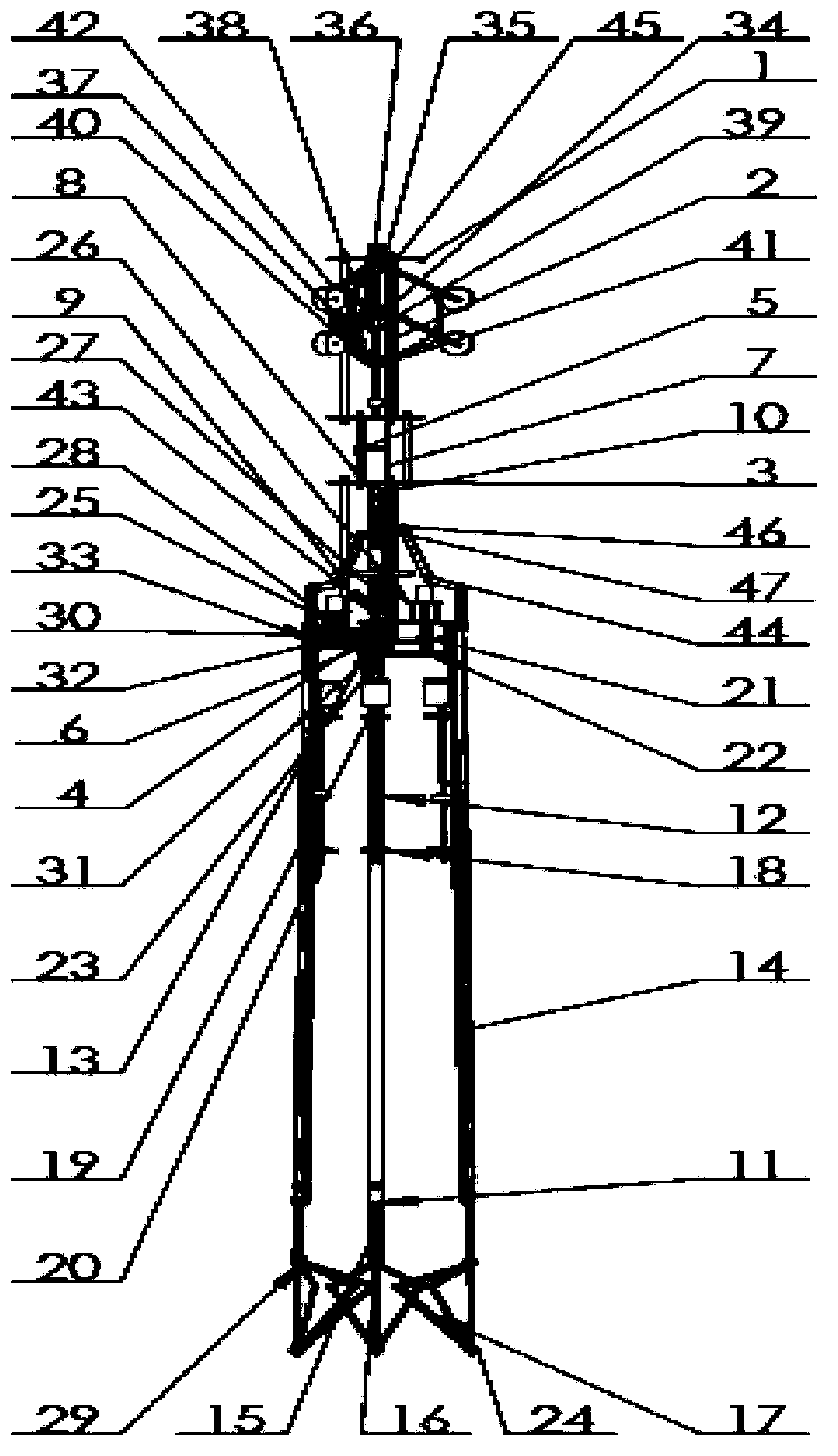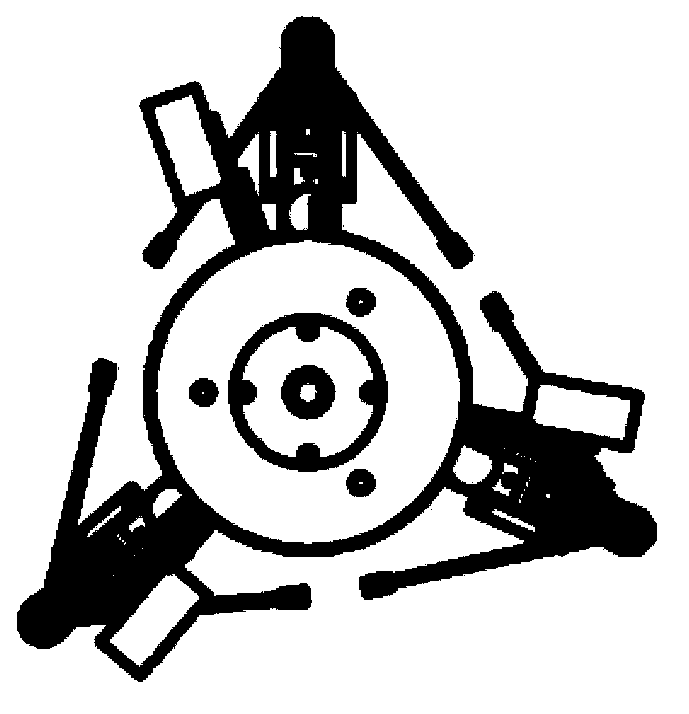Deep well rescuing device
A rescuer and deep well technology, applied in the field of deep well rescuers, can solve the problems of danger, time-consuming and low efficiency of rescuers, and achieve the effects of high reliability and convenient disassembly and assembly.
- Summary
- Abstract
- Description
- Claims
- Application Information
AI Technical Summary
Problems solved by technology
Method used
Image
Examples
Embodiment Construction
[0024] figure 1 is the front view of the deep well rescue device according to the present invention, figure 2 It is a top view of the deep well rescue device according to the present invention. As shown in the figure, the deep well rescue device includes a supporting structure, a positioning mechanism, a clamping mechanism, a positioning mechanism, a lifting mechanism, a master control system and a communication device. By closing the mechanical arm and stretching it under the trapped person and then opening it, the trapped person is embraced in the rescue device, and finally the rescue device and the trapped person are pulled up together with a rope, thereby realizing underground rescue.
[0025] like image 3 As shown in , the support structure is a layered structure, including four support plates, the upper plate 1, the lower middle plate 3, the upper middle plate 3' and the lower plate 4, and the four support plates are all circular plates with a diameter of about 150mm...
PUM
 Login to View More
Login to View More Abstract
Description
Claims
Application Information
 Login to View More
Login to View More - Generate Ideas
- Intellectual Property
- Life Sciences
- Materials
- Tech Scout
- Unparalleled Data Quality
- Higher Quality Content
- 60% Fewer Hallucinations
Browse by: Latest US Patents, China's latest patents, Technical Efficacy Thesaurus, Application Domain, Technology Topic, Popular Technical Reports.
© 2025 PatSnap. All rights reserved.Legal|Privacy policy|Modern Slavery Act Transparency Statement|Sitemap|About US| Contact US: help@patsnap.com



